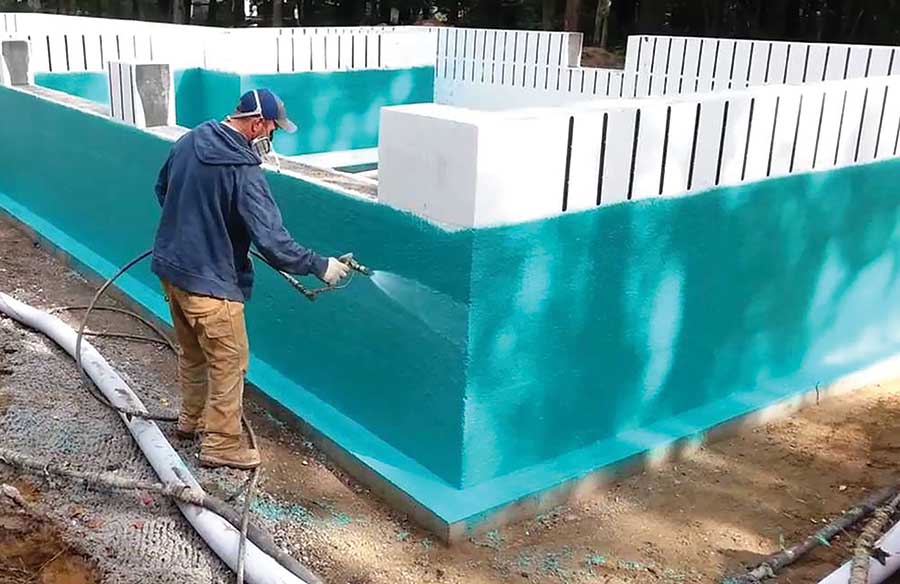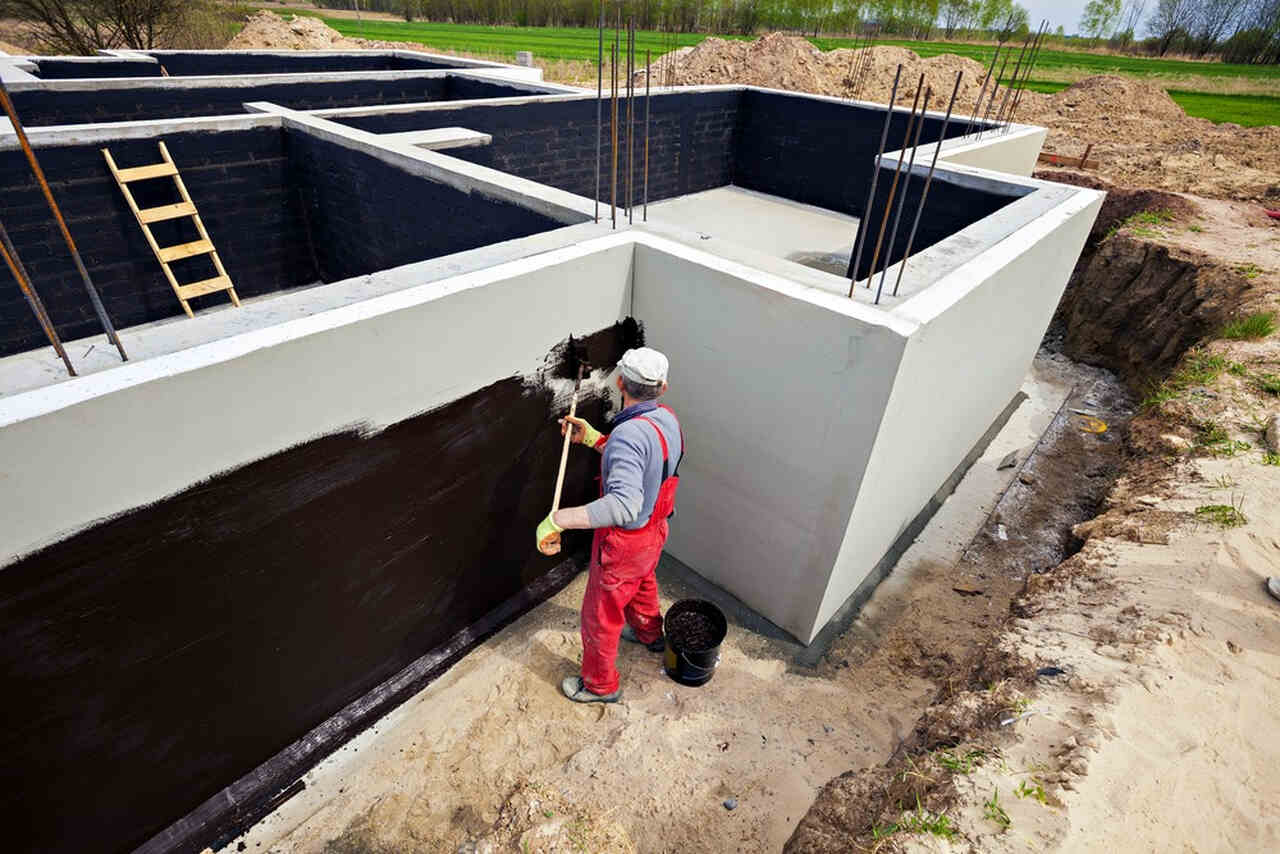
All About Waterproofing: Understanding Its Value and Benefits for Your Home
Waterproofing is a necessary facet of home upkeep that numerous house owners overlook. It serves to protect frameworks from the damaging impacts of water seepage, which can bring about significant concerns with time. Comprehending the numerous approaches and their importance can assist home owners make informed decisions. As the conversation unfolds, the actual question remains: exactly how can effective waterproofing change a home's resilience versus moisture-related risks?
What Is Waterproofing and Exactly How Does It Function?
Waterproofing is an important process made to protect structures and frameworks from water infiltration. It involves the application of different products and techniques that produce an obstacle, preventing water from permeating surfaces. Common waterproofing approaches consist of the usage of membrane layers, coverings, and sealants, which can be put on roofs, structures, and wall surfaces. Each technique is chosen based on the particular needs and conditions of the structure.The effectiveness of waterproofing counts on proper setup, making sure that all locations are sufficiently covered and sealed. Materials such as bituminous membranes, liquid waterproofing substances, and cementitious layers are regularly used, each offering special benefits. In addition, drain systems may be integrated to redirect water far from at risk locations, even more enhancing protection. On the whole, waterproofing not only safeguards structural stability but additionally enhances long life, making it a crucial factor to consider in building and construction and restoration projects.
The Importance of Waterproofing for Home owners
House owners face numerous obstacles in keeping their properties, and among one of the most considerable concerns is water damages. This concern can emerge from different resources, including hefty rainfall, flooding, and pipes failings. When left unaddressed, water damage can cause extreme structural troubles, mold development, and expensive fixings. Waterproofing stands as a vital safety net that shields homes from these possible dangers.
Usual Waterproofing Approaches and Techniques
When thinking about waterproofing approaches, home owners can pick from a selection of efficient options. Exterior waterproofing solutions concentrate on preventing water from passing through the structure, while indoor waterproofing strategies address moisture issues once they have actually taken place. Comprehending these options is vital for maintaining a completely dry and healthy and balanced home environment.
Outside Waterproofing Solutions
To secure a residential property from water breach, various exterior waterproofing remedies can be employed, each tailored to the certain requirements of the structure. One common approach is the application of water-proof membranes, which produce a barrier versus moisture. These membrane layers can be either liquid-applied or sheet-based, relying on the installment demands. One more effective strategy includes making use of drainage systems, such as French drains, that redirect water away from the structure. Furthermore, applying outside sealants can help protect surface areas from water penetration and rust. Landscaping services, consisting of grading and appropriate drainage, can additionally add notably to stop water accumulation around the foundation. Each of these approaches plays a crucial function in enhancing the long life and toughness of the residential or commercial property.
Inside Waterproofing Techniques
Interior waterproofing strategies are important for safeguarding a home versus moisture and water damages. Common approaches consist of the application of sealants and membranes, which develop a barrier on wall surfaces and floorings to stop water infiltration. Inside drainage systems, such as sump pumps and French drains pipes, successfully redirect water away from at risk areas. Furthermore, vapor obstacles can be set up to obstruct wetness from penetrating with walls and floors, especially in basements and crawl areas (French drain installation Omaha). Regular maintenance and inspection of these systems are necessary to ensure their performance. Attending to any pipes leakages or condensation problems quickly can greatly improve the overall waterproofing approach. With each other, these techniques offer house owners with a thorough approach to reducing the threat of water-related problems

Signs Your Home Requirements Waterproofing
House owners must understand key indicators that their residential property might call for waterproofing. Visible water damages, musty smells, and regular mold growth are critical signs that moisture is compromising the integrity of the home. Dealing with these issues quickly can stop more damage and ensure a much healthier living setting.
Visible Water Damage
Noticeable water damages works as a clear indicator that a home may call for waterproofing steps. Home owners must be cautious for indicators such as water discolorations on wall surfaces or ceilings, peeling off paint, and warped floor covering. These noticeable symptoms commonly indicate underlying wetness concerns that, if left unaddressed, can cause more substantial damages and pricey repair services. Mold and mildew development can additionally take place, though it will certainly be talked about in the following section. Additionally, property owners should inspect cellars and creep spaces for dampness or efflorescence on concrete surfaces, which shows moisture penetration. Observing these indicators early can help prevent even more wear and tear of the home's structural stability. Prompt waterproofing measures can guard the investment and preserve a healthy living atmosphere.
Musty Odors Present
Moldy smells are usually an indicator that moisture is lingering in hidden areas of a home, suggesting the demand for waterproofing options. These unpleasant scents regularly arise from damp cellars, creep rooms, or behind wall surfaces, where water seepage may not be promptly noticeable - Foundation waterproofing Omaha. House owners ought to pay close interest to these smells, as they recommend that excess humidity is caught, potentially causing more damages. The visibility of moldy scents can endanger interior air quality, influencing the wellness and comfort of residents. Overlooking this cautioning sign can lead to extra severe concerns, making timely assessment and action vital. By resolving waterproofing requirements, home owners can remove musty smells and create a much healthier living setting
Regular Mold Growth
Frequent mold and mildew development is a clear indication that a home might be experiencing moisture problems, demanding waterproofing steps. Mold and mildew prospers in wet environments, making it a significant problem for property owners. Signs of mold see this page can consist of dark areas on wall surfaces, ceilings, and around home windows, in addition to a persistent moldy smell. If mold and mildew shows up repeatedly despite cleaning up efforts, it suggests underlying wetness problems. This can arise from leaks, poor drain, or high moisture levels. Overlooking these indications can lead to architectural damage and wellness risks, specifically for individuals with respiratory system problems. Consequently, resolving waterproofing immediately can help minimize mold and mildew development, ensuring a more secure and much healthier living environment. House owners must consider specialist evaluations to identify the extent of the dampness issue.
The Long-Term Advantages of Buying Waterproofing
Spending in waterproofing uses property owners a profound sense of safety and security and peace of mind, understanding their home is safeguarded versus henry waterproofing moisture-related damages. This proactive method substantially lowers the danger of structural concerns, such as timber rot and structure splits, which can bring about costly repair work with time. In addition, waterproofing aids preserve indoor air quality by decreasing mold and mildew development, which can have unfavorable wellness implications for occupants.Furthermore, waterproofing enhances the toughness of a home, inevitably preserving its value. A well-protected building is extra attractive to potential customers, as they are less most likely to encounter concealed wetness issues. This investment additionally adds to energy efficiency; properly secured areas prevent drafts and lower home heating and cooling prices. Generally, the long-term advantages of waterproofing not just guarantee the architectural integrity of a home yet likewise foster a much healthier living atmosphere and bolster the residential property's marketability.
Choosing the Right Waterproofing Expert for Your Home
Just how can a home owner assurance they select one of the most certified waterproofing professional for their demands? The process begins with thorough study and obtaining several quotes. Homeowners need to seek specialists with a strong online reputation, validated credentials, and extensive experience in waterproofing. Inspecting on-line evaluations and asking for referrals can give important understanding into a contractor's dependability and top quality of work.Moreover, it is important to ask about the specific waterproofing techniques each expert uses, along with the products used. Property owners must validate that the picked contractor is licensed and insured, which secures versus potential obligations. A reliable professional will likewise provide a thorough agreement laying out the extent of work, timeline, and warranty info. By concentrating on these criteria, homeowners can make educated decisions, ultimately causing enhanced security against water damage and an effective waterproofing remedy tailored to their home's demands.
Frequently Asked Questions
Can Waterproofing Be Done in Wintertime or Cold Weather?
Waterproofing can be challenging throughout winter months or winter because of lower temperature levels influencing products' bond and treating procedures. Nevertheless, specialized products made for chilly conditions can make it possible for effective waterproofing applications even in cold weather.
Just how Frequently Should I Water-proof My Home?
The frequency of waterproofing a home normally depends on numerous elements, consisting of environment and material top quality. Professionals recommend assessing conditions annually and reapplying every 5 to 10 years, or sooner if considerable wear appears.
Does Waterproofing Affect Home Resale Worth?
Waterproofing can significantly impact a home's resale worth (Sump pump installation & replacement Omaha). Possible customers often see waterproofing as a secure against water damages and mold, enhancing the residential or commercial property's charm and bankability, possibly bring about greater deals and quicker sales
Is Do It Yourself Waterproofing Effective for All Residences?
The effectiveness of do it yourself waterproofing differs by home. Variables such as residential property age, ecological conditions, and existing damages impact results. Homeowners should assess their details conditions prior to attempting DIY remedies to ensure long-lasting security.

Exist Eco-Friendly Waterproofing Options Available?
Eco-friendly waterproofing options do exist, consisting of all-natural sealers like beeswax and plant-based items. These remedies decrease ecological effect while successfully shielding frameworks from Get More Info water damage, appealing to home owners seeking lasting options for their waterproofing needs.